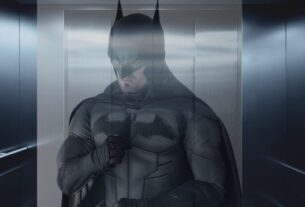Introduction:
Claustrophobia, an anxiety disorder characterized by an irrational fear of enclosed spaces, is a distressing and debilitating condition that affects millions of individuals worldwide. People with claustrophobia experience intense anxiety and panic when confronted with confined spaces, such as elevators, small rooms, tunnels, or crowded places. In this comprehensive article, we will delve into the possible causes of claustrophobia, its consequences on human behavior, and explore both psychological and supernatural perspectives. Additionally, we will shed light on some famous individuals who have publicly disclosed their struggles with this challenging phobia.
Section 1: Understanding Claustrophobia
1.1 Definition of Claustrophobia:
Claustrophobia is derived from the Latin word “claustrum,” meaning “a confined space,” and “phobos,” meaning “fear.” It is classified as a specific phobia, causing individuals to experience severe anxiety and distress when placed in or even thinking about being in enclosed spaces.
1.2 Prevalence of Claustrophobia:
Claustrophobia is relatively common, affecting approximately 5-7% of the global population. It can manifest at any age, although it often begins in childhood or adolescence.
Section 2: Possible Causes of Claustrophobia
2.1 Childhood Trauma:
Childhood experiences, such as being locked in a closet or experiencing confinement as punishment, can contribute to the development of claustrophobia. Traumatic events during formative years can imprint lasting fears related to confined spaces.
2.2 War or Torture Traumas:
Individuals who have experienced war or torture traumas may develop claustrophobia due to their exposure to confined and threatening environments during captivity or imprisonment.
2.3 Unresolved Guilt:
Claustrophobia can be triggered by unresolved guilt or feelings of responsibility for past events. The fear of enclosed spaces may represent the fear of being trapped in one’s own guilt or secrets.
2.4 Prenatal Trauma:
Some researchers suggest that prenatal experiences, such as restricted movement or an adverse womb environment, could contribute to the development of claustrophobia later in life.
2.5 Supernatural Causes:
In some cultures, claustrophobia is linked to supernatural beliefs and cultural folklore. The fear of enclosed spaces may be associated with spirits or supernatural entities.
Section 3: Consequences on Human Behavior
3.1 Avoidant Behaviors:
Avoidance is a common coping mechanism among individuals with claustrophobia. They may actively avoid situations involving enclosed spaces, leading to limitations in daily activities and social interactions.
3.2 Panic Attacks:
Encountering confined spaces can trigger panic attacks in individuals with claustrophobia. Panic attacks are characterized by intense fear, sweating, trembling, and a sense of impending doom.
3.3 Agoraphobia:
For some individuals, claustrophobia can progress to agoraphobia, where they fear situations from which escape might be difficult or embarrassing. This can result in a reluctance to leave the safety of their home.
3.4 Impact on Mental Health:
Claustrophobia can lead to feelings of helplessness, isolation, and anxiety. It may also contribute to other mental health conditions, such as depression and generalized anxiety disorder.
Section 4: Famous People with Claustrophobia
4.1 Oprah Winfrey:
The renowned media personality, Oprah Winfrey, has spoken about her claustrophobia. She once mentioned feeling anxious in tight spaces and elevators due to her fear of confinement.
4.2 Billy Bob Thornton:
The acclaimed actor and filmmaker, Billy Bob Thornton, has publicly discussed his struggles with claustrophobia. He revealed that he finds it challenging to be in confined spaces, such as elevators.
4.3 Sigmund Freud:
The father of psychoanalysis, Sigmund Freud, reportedly suffered from claustrophobia. Despite his profound contributions to psychology, he grappled with his fear of enclosed spaces.
Conclusion:
Claustrophobia, the fear of enclosed spaces, is a prevalent and often debilitating anxiety disorder. Its possible causes range from childhood traumas and war experiences to unresolved guilt and prenatal factors. The fear can have profound consequences on human behavior, leading to avoidant tendencies, panic attacks, and, in extreme cases, agoraphobia.
In some cultures, supernatural beliefs contribute to the understanding of claustrophobia. Famous individuals like Oprah Winfrey, Billy Bob Thornton, and even the esteemed psychologist Sigmund Freud have courageously shared their experiences with this challenging phobia. By understanding the origins and consequences of claustrophobia, we can provide empathy, support, and effective therapeutic interventions to help individuals overcome this fear, enabling them to regain control over their lives and live without the shackles of claustrophobia.



